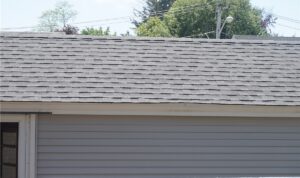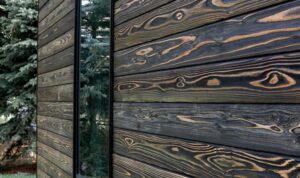Home sealed exteriors play a crucial role in maintaining the integrity and efficiency of a house. From preventing energy loss to enhancing structural durability, the importance of proper sealing cannot be overstated. Let's delve into the world of home sealed exteriors and discover the key elements that make them essential for every homeowner.
Importance of Home Sealed Exteriors
Properly sealed exteriors are essential for maintaining a comfortable and efficient home environment. Sealed exteriors play a crucial role in energy efficiency by preventing air leaks and drafts. This helps to regulate the temperature inside the home, reducing the workload on heating and cooling systems.
As a result, homeowners can save on energy bills and reduce their carbon footprint.
Preventing Water Damage
- Sealed exteriors help to keep water out of the home, preventing water damage to the structure.
- Water infiltration can lead to mold growth, rotting wood, and other costly repairs.
Improving Indoor Air Quality
- Sealed exteriors help to prevent pollutants and allergens from entering the home, improving indoor air quality.
- This is especially important for individuals with respiratory issues or allergies.
Enhancing Comfort
- Properly sealed exteriors help to maintain consistent temperatures throughout the home, enhancing overall comfort.
- Eliminating drafts and cold spots creates a more pleasant living environment for residents.
Common Materials Used for Sealing Home Exteriors
When it comes to sealing home exteriors, various materials are commonly used to provide protection against the elements and ensure the longevity of the property. Each material offers different advantages in terms of effectiveness, durability, and maintenance requirements.
1. Caulk
Caulk is a popular material used for sealing cracks and gaps in home exteriors. It is flexible and can be painted over, making it a versatile option for filling in small openings. However, caulk may shrink or crack over time, requiring reapplication to maintain its effectiveness.
Regular inspection and maintenance are necessary to prevent water intrusion.
2. Weather Stripping
Weather stripping is typically made of rubber, vinyl, or foam and is used to seal gaps around doors and windows. It helps to improve energy efficiency by preventing air leaks and drafts. Weather stripping is easy to install and can last for several years with proper care.
Periodic replacement may be needed to ensure continued protection.
3. Exterior Sealant
Exterior sealants are commonly used to protect surfaces such as wood, concrete, and metal from moisture and UV damage. They can be clear or tinted, providing a protective barrier while enhancing the appearance of the exterior. Regular reapplication is recommended to maintain the sealant's effectiveness and prolong the lifespan of the surfaces.
4. Foam Insulation
Foam insulation is a versatile material that can be used to seal gaps and insulate walls, roofs, and foundations. It provides an airtight seal, helping to reduce energy costs and improve indoor comfort. Foam insulation is durable and long-lasting, but professional installation may be required for optimal results.
5. Exterior Paint
Exterior paint not only adds color and aesthetic appeal to a home but also serves as a protective barrier against moisture, UV rays, and other environmental factors. High-quality exterior paint can enhance the durability of surfaces and minimize the need for frequent repainting.
Proper surface preparation and regular maintenance are essential to ensure the longevity of the paint job.
Methods for Sealing Home Exteriors
When it comes to sealing home exteriors, there are specific steps and practices that can help ensure a thorough and long-lasting seal. Proper preparation of surfaces before applying sealants is crucial in achieving the desired results.
Step-by-Step Process
- Clean the surface: Remove any dirt, debris, or old sealant from the exterior walls using a pressure washer or scrub brush.
- Repair any damage: Fill in cracks, holes, or gaps with an appropriate sealant or patching compound to ensure a smooth surface.
- Apply primer: Use a high-quality primer to help the sealant adhere better to the surface and improve its durability.
- Seal the surface: Apply the sealant evenly using a brush, roller, or sprayer, following the manufacturer's instructions for best results.
- Allow to dry: Let the sealant dry completely before exposing it to moisture or other elements to ensure a proper seal.
Tips for Surface Preparation
- Ensure the surface is dry: Moisture can prevent the sealant from adhering properly, so make sure the surface is completely dry before applying any sealant.
- Remove old sealant: Use a scraper or solvent to remove any old sealant that may interfere with the new sealant's adhesion.
- Fill in cracks and gaps: Properly fill in any cracks, holes, or gaps in the surface to prevent water infiltration and improve the sealant's effectiveness.
Best Practices for a Long-Lasting Seal
- Choose the right sealant: Select a sealant that is appropriate for the specific material of your home's exterior to ensure compatibility and effectiveness.
- Apply multiple coats: For added protection, consider applying multiple coats of sealant, allowing each layer to dry completely before adding the next one.
- Maintain regularly: Inspect the sealed surfaces regularly for any signs of wear or damage, and reapply sealant as needed to maintain a strong and durable seal.
Benefits of Properly Sealed Home Exteriors
Properly sealed home exteriors offer a range of advantages that contribute to the overall well-being of your home. By ensuring that your home's exterior is sealed correctly, you can enjoy a variety of benefits that can help maintain the integrity and longevity of your property.
Prevention of Moisture Infiltration
- Sealed home exteriors act as a barrier against moisture infiltration, preventing water from seeping into the walls and causing damage.
- By keeping moisture out, sealed exteriors help prevent issues such as mold growth, rotting wood, and structural damage.
- Properly sealed exteriors can also help maintain a healthy indoor environment by reducing the risk of mold and mildew growth inside the home.
Enhanced Lifespan of the Home
- Sealed exteriors can significantly extend the lifespan of your home by protecting it from the elements and environmental factors.
- By preventing water damage and other forms of deterioration, sealed exteriors help maintain the structural integrity of the building over time.
- A well-sealed exterior can reduce the need for frequent repairs and maintenance, saving you time and money in the long run.
Ending Remarks
In conclusion, home sealed exteriors are not just a cosmetic feature but a vital component of a well-maintained home. By understanding the significance of proper sealing, homeowners can ensure a comfortable living environment and long-term structural stability. Dive into the world of home sealed exteriors and elevate your home maintenance game today.
Detailed FAQs
What are the common signs of poorly sealed home exteriors?
Poor insulation, drafts, and moisture seepage are common indicators of inadequately sealed exteriors.
How often should home exteriors be resealed?
It is recommended to reseal home exteriors every 5-7 years to maintain optimal efficiency and protection.
Can I seal my home exteriors on my own?
While DIY sealing is possible, consulting a professional ensures proper application and long-lasting results.



